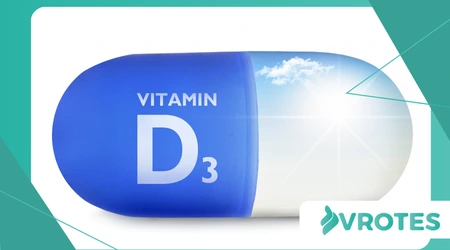Vitamin D–Rich Meals for Mood and Bone Support

Vitamin D–rich meals. Menopause ushers in a cascade of hormonal shifts, profoundly impacting a woman’s body.
Anúncios
Estrogen decline, in particular, can compromise bone density and contribute to mood fluctuations. Here, vitamin D steps onto center stage.
It’s more than just a vitamin; it’s a pro-hormone, crucial for calcium absorption.
Without adequate vitamin D, calcium struggles to fortify bones, leading to increased osteoporosis risk.
Beyond bones, vitamin D receptors exist throughout the brain.
Anúncios
This suggests a direct role in neurotransmitter production, influencing mood and cognitive function.
Many women report increased irritability or low mood during menopause.
Optimizing vitamin D levels can offer a natural path to emotional equilibrium. It’s a foundational element for overall well-being.
Think of vitamin D as the conductor of an orchestra, ensuring each instrument (body system) plays in harmony.
Beyond the Sun: Sourcing Vitamin D from Your Plate
While sunlight is a primary source, dietary vitamin D–rich meals provide a consistent, controlled intake. Relying solely on sun exposure can be unreliable, given seasonal variations and skin cancer concerns.
Incorporating specific foods into your daily routine ensures a steady supply.
This proactive approach empowers you to manage your health. It’s about building a resilient body from within.

Fatty Fish: Ocean’s Bounty for Your Bones
Fatty fish stands out as a prime source of naturally occurring vitamin D. Salmon, mackerel, and tuna are excellent choices. A serving offers a substantial boost.
Wild-caught salmon, for example, can provide hundreds of international units (IU) per 3.5-ounce serving. This makes it an invaluable addition to any menopausal diet. Consider it a nutritional powerhouse.
Read more: Hydration Hacks: Drinks to Keep You Cool During Hot Flashes
Prepare it baked, grilled, or pan-seared for a delicious and nutritious meal. Pair it with colorful vegetables for a complete dish. This is a simple yet effective strategy.
Fortified Dairy and Alternatives: Everyday Essentials
Many milk, yogurt, and plant-based milk alternatives are fortified with vitamin D.
This makes it easier to meet daily requirements without extensive meal planning. Check labels for fortification levels.
These products are often also good sources of calcium, creating a synergistic effect for bone health.
It’s a convenient way to integrate vital nutrients. Don’t underestimate their impact.
Eggs: A Versatile Powerhouse
Eggs, particularly the yolks, contain a modest amount of vitamin D.
While not as concentrated as fatty fish, they are an accessible and versatile option. Enjoy them scrambled, poached, or in omelets.
One large egg yolk provides around 40 IU of vitamin D. Incorporating a few eggs weekly can contribute to your overall intake. They are a quick and easy protein source.

Mushrooms: Nature’s Unique Contribution
Certain mushrooms, when exposed to ultraviolet (UV) light, can produce vitamin D. Shiitake and maitake are notable examples.
Read here: Dairy vs. Plant-Based: Choosing Calcium Sources Post-50
They add an earthy flavor to many dishes. Sauté them, add them to stir-fries, or include them in soups. This offers a unique plant-based source.
Crafting Delicious and Effective Vitamin D–Rich Meals
Integrating these foods into your diet doesn’t have to be complicated. Small, consistent changes yield significant benefits over time. Think creatively about your meals.
For instance, a delightful breakfast could be scrambled eggs with sautéed UV-treated mushrooms. This provides a flavorful start to your day. It’s both nourishing and satisfying.
For lunch, consider a salmon salad with fortified yogurt dressing. This offers a substantial protein and vitamin D punch. It’s a portable and healthy option.
Dinner could feature baked mackerel with roasted vegetables. This provides essential fatty acids and plenty of vitamin D. It’s a complete and wholesome meal.
Remember, variety is key to a well-rounded diet. Don’t limit yourself to just one source. Explore different recipes and culinary styles.
The Broader Impact: Beyond Bones and Mood
The benefits of sufficient vitamin D extend far beyond bone and mood support.
It plays a role in immune system function, crucial for overall resilience. A robust immune system protects against illness.
Moreover, research suggests a link between vitamin D and cardiovascular health.
While not a standalone solution, it contributes to a holistic approach. It’s an investment in your long-term health.
++ DIY Cooling Mist Recipes to Beat Hot Flashes
A study published in the New England Journal of Medicine in 2010 found that vitamin D supplementation significantly reduced the risk of fractures in older adults, highlighting its crucial role in bone health.
This real-world data reinforces the importance of adequate intake.
The average daily intake of vitamin D in adult women in Brazil is significantly lower than recommended levels. This statistic underscores the widespread deficiency.
| Food Item (per 3.5 oz/100g serving) | Vitamin D (IU) |
| Wild Salmon | 600-1000 |
| Mackerel | 360 |
| Canned Tuna (light, in oil) | 236 |
| Fortified Milk (1 cup) | 100 |
| Egg Yolk (1 large) | 40 |
| UV-treated Mushrooms | 400-800 |
This table provides a quick reference for incorporating vitamin D–rich meals into your diet. It’s a practical guide for meal planning.
Addressing Deficiencies and Supplementation
Despite best efforts, some women may still struggle to achieve optimal vitamin D levels through diet alone.
Factors like limited sun exposure and malabsorption can contribute. This is where professional guidance becomes invaluable.
Blood tests can determine your current vitamin D status. If levels are low, your doctor may recommend supplementation.
Always consult a healthcare provider before starting any new supplement regimen.
Supplements can bridge the gap when dietary intake is insufficient. They offer a concentrated dose of the vitamin. However, they should complement, not replace, a healthy diet.
A Call to Action: Prioritize Your Well-being
Menopause is a journey of transformation, and empowering yourself with knowledge is paramount. Prioritizing vitamin D–rich meals is a simple yet profound step towards enhancing your mood and safeguarding your bones. It’s an act of self-care.
It’s about taking control of your health narrative. Are you ready to embrace this nutritional powerhouse for a more vibrant, resilient you? Your body will thank you.
A Brighter Future Through Nutrition
As we navigate the complexities of menopause, understanding the role of essential nutrients like vitamin D is crucial.
By consciously incorporating vitamin D–rich meals into our daily lives, we lay a strong foundation for both physical and emotional well-being. It’s a journey of nourishment and empowerment.
Remember, every meal is an opportunity to support your health. Make smart choices, consult with professionals, and embrace the power of food.
Frequently Asked Questions
How much vitamin D does a menopausal woman need daily?
The general recommendation is 600 to 800 IU (International Units) per day, but some women may need more depending on factors like sun exposure and bone health. Always consult a doctor for a personalized dosage.
Does vitamin D supplementation replace food?
No, supplementation should be a complement to your diet, not a substitute. Foods rich in vitamin D offer other important nutrients that supplements don’t provide.
Can I get all the vitamin D I need just from the sun?
While the sun is an excellent source, sun exposure can be inconsistent and carries risks of skin damage. A combination of sun, diet, and, if necessary, supplements is the safest and most effective approach.
What are the signs of vitamin D deficiency?
Symptoms can include fatigue, bone pain, muscle weakness, and mood changes. However, many people with a deficiency don’t show clear symptoms, making blood tests important.
Do mushrooms really contain vitamin D?
Yes, some mushrooms, especially those exposed to UV light, can contain vitamin D. Check the label to confirm if they have been UV-treated.
